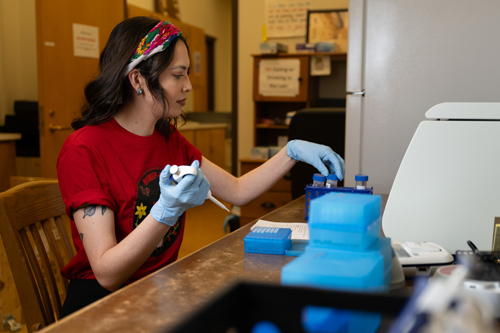“The pain was very, very limiting. It was affecting my quality of life, and I didn’t want to live that way,” she says. She made up her mind to do something about it and conducted quite a bit of research. “There were three main factors I considered before surgery,” she explains. “The first was the best hospital I could find, which was HSS. The second was the best surgeon I could find. And the third component was my mental attitude and willingness to do the work after surgery to achieve the best outcome.”
For each joint replacement surgery, Mrs. Graham, a former teacher and high school guidance counselor, made the trip from her home in Delaware to HSS in New York City. “Each time, I knew I just needed to do it. I love to walk, I love to shop, I love to play with my grandchildren,” she explains. “And the arthritis was causing me to limp, to be in pain, it was affecting my sleep. That kind of pain shows on your face. You’re not a happy person. I didn’t want to delay surgery any more than I had to.”
Her physician, Geoffrey Westrich, MD, who specializes in knee and hip replacements at HSS, says it’s not unusual for patients to have advanced arthritis in two joints. Having four joint replacements is less common, but it does happen. He recommends that patients considering multiple joint replacement surgeries do their research to find a high-volume joint replacement center and a highly experienced orthopedic surgeon who takes the time to answer all their questions and with whom they feel comfortable.
“When someone is going to have more than one joint replacement, timing and recovery are important, and no two patients are alike,” Dr. Westrich says. “If someone has painful arthritis in both knees, for example, and conservative treatments such as physical therapy and over-the-counter medication provide no relief, we generally wait about three months in between surgeries. That’s about how long it takes for the body to heal, and that’s about how long it takes to do physical therapy and get the muscles strong again. Patients are going to be supporting their weight with the side that had the first surgery.”
Dr. Westrich adds that a critical factor is the experience of the surgeon in knowing when it is safe to proceed with the next joint replacement. That’s why, after the initial post-surgery visits, Dr. Westrich sees patients again after six weeks to make sure they’re doing well, and sometimes again after three months, before proceeding with a second joint replacement.
These days, same-day, double joint replacements are done less often, as Dr. Westrich and other researchers at HSS have found it is better for most patients to have “staged” procedures, that is, to have the surgeries at least a few months apart. “In studies, we have found that same-day bilateral knee replacement surgery can present more challenges for the patient from a medical standpoint, more pain medication is needed after surgery, and physical therapy is much more difficult because they don’t have a good leg to stand on, so to speak,” he says.
Dr. Westrich notes that sometimes there is a good reason to perform a same-day bilateral joint replacement. For example, both arthritic knees may have a severe flexion contracture, which means they are in a bent position and the patient cannot straighten them. “In such cases, it may be appropriate to do a double joint replacement, as physical therapy could be much more difficult if the non-operated knee is bent.” He adds that if the contracture isn’t too severe, a shoe lift can equalize leg length and enable the patient to do physical therapy after two separate procedures.
Mrs. Graham had four separate surgeries, and less than two months after her final hip replacement in May, she said she was feeling great. “I am rocking this, totally rocking it. I went to play mahjong with my friends, and when I walked in, they couldn’t believe how great I looked and how well I’m doing.”
She believes her mental attitude and willingness to work hard in rehab after surgery played a major role in optimizing the outcome of each joint replacement. Dr. Westrich agrees that going in with a positive attitude and putting in the work can enhance outcomes.
“Lorry Graham clearly was very interested in her recovery and worked very hard after surgery to achieve a good outcome,” he notes. “There’s no doubt in my mind that patients who are dedicated to working hard and really put in the time in physical therapy tend to make progress more quickly and have a better recovery overall.”
Just two months after her last hip replacement, Mrs. Graham visited a new park in New York City with her friend and walked for more than an hour, pain-free. “I’m walking all over the place,” she says. “I’m walking better than I have in the last six years. It feels great.”


